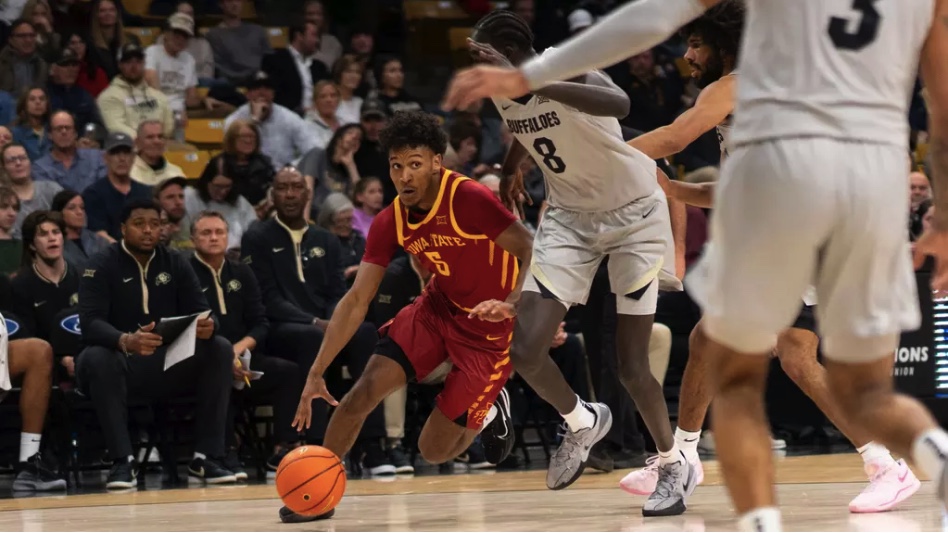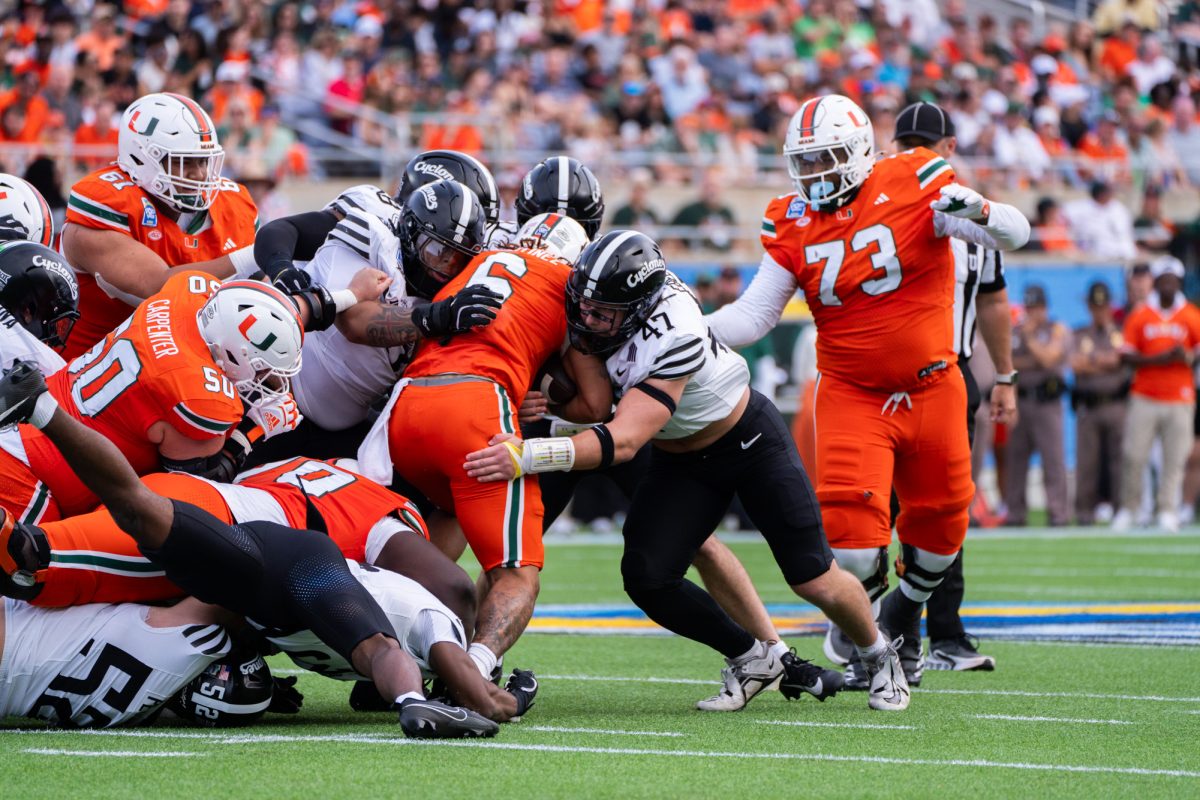Public art: more than a pretty sight
May 24, 2019
Public art exploded in popularity during the 2010s. With companies such as Red Bull, Pepsi and Lexus contracting artists to work on advertisements geared toward a younger audience, public art quickly became a hot commodity for communities and individuals looking to liven up their area. It also created a lucrative job market for artists and gave business owners a way to make their buildings unique.
While it may be easy to look at public art and take it at face value, public art offers a host of hidden benefits for people, businesses and communities that welcome it into their lives.
Arizona-based Timmy Ham saw an opportunity in 2007. With the explosion of social media, specifically Myspace and Facebook, people spread ideas faster than ever. With the means to share his ideas with the rest of the world, Ham quickly began to curate a catalog of clothing concepts on his pages.
“I, as an artist, started to see how you could use social media at that time to get yourself out there,” Ham said. “And I just started to brand myself as more than an artist, but as a personal brand.”
It wasn’t until two years after leaving college that Ham explored the prospect of using art as his full-time job.
While Ham continued his work with his lifestyle brand, his social media accounts grew even more popular. Since joining photo-sharing app Instagram in 2012, Ham has amassed 415,000 followers. His Twitter account boasts 55,000 followers.
The attention on social media opened new doors for Ham. Ham’s style of street art and his presence on social media led to paid partnerships with industry heavyweights such as Lexus, Uber, Red Bull, Logitech and Pepsi.
Social media became a godsend for artists, allowing them to display their work for anyone to see for free. The advent of social media created a platform for artists to not only show off their work, but market it and communicate with potential buyers.
Des Moines wasn’t late to the public art trend. In an effort to continue the 1991 broad redevelopment plan for Des Moines’ downtown area, two blocks of grassy area in Des Moines’ Western Gateway Park were converted to an area for public art. Through donations from John and Mary Pappajohn and other private donors, the Pappajohn Sculpture Park came to fruition in 2009.
The park, which features 30 pieces by 24 artists, is now valued at over $40 million and kick-started the influx of public art into the downtown area. Seeing how many people the park brought into the downtown area, Des Moines businesses soon followed suit. Today, businesses such as RoCA and Work Space boast massive murals on the sides of their buildings.
Brian Bonanno, a Des Moines-based community development and sustainability professional, works with businesses, communities and artists to commission public art.
Bonanno began seeing public art become widespread on buildings and in advertising in 2011. Since integrating street-style public art into his community development programs in 2012, Bonanno has overseen the installation of 22 murals during the revitalization of three underserved Des Moines neighborhoods: Capitol Park, Capitol East and Martin Luther King Jr. Park.
While morale in underserved communities may be low, Bonanno has found that public art creates a more positive and welcoming environment. Bonanno also said that the relationship between artists and community businesses is almost always symbiotic.
“I’ve definitely had businesses tell me that they’ve seen an uptick in people coming through their doors,” Bonanno said. “The art instills a sense of pride in the neighborhood and creates a more welcoming environment. The businesses are happy because it brings positive attention to their building and the artists get to display their work.”
Bonanno’s expertise is sought out in a variety of ways. In some cases, city officials will approach Bonanno to undertake a community development project. In others, businesses or artists come to Bonanno wanting to take on an art project. Although Bonanno enlists help from a diverse range of artists, tight community development budgets limit the amount he can pay artists. The real payoff, for most artists, is getting their work more exposure and seeing the effect it can have on the communities.
When businesses and officials reach out to Bonanno, his task is to get in contact with artists that fit the theme of what businesses want. While Bonanno chooses to focus on how art helps communities, he also understands why a business would seek out public art.
“It brings more interest to their business,” Bonanno said. “The art creates a welcoming environment and sometimes I will try to find an artist that targets the kind of audience a business caters to.”
The addition of murals specifically has led to a younger audience becoming regulars in the downtown Des Moines area. Murals have become a prime spot for this youthful audience to take pictures in front of. As of Friday, “#mural” has been mentioned 8.3 million times on Instagram.
“I think I’d choose a business with a mural on its wall over one that didn’t if I had to,” said Kyle Baumhover, a junior studying marketing at Iowa State. “It’s just cool to see a store with a huge art piece on it. It makes the store instantly more interesting to me. When I was in high school it was popular for people to go downtown and take pictures in front of them and stuff.”
The growth of public art as a community feature led to another Iowa community forming a board specifically geared toward commissioning public art. The West Des Moines Public Arts Advisory Commission is composed of seven board members and is commissioned through the city of West Des Moines.
Since the commission’s inception nine years ago, a total of 11 pieces have been commissioned during a five-year period. The first four years were spent gaining funds for their projects. The commission is funded through hotel/motel taxes. Tamara Kenworthy, a current member and former chairwoman of the commission, said that public art plays an integral role in attracting businesses, employees and new residents.
“As to the economic development of the area, people want to live an area that is beautiful and brings them joy,” Kenworthy said. “The public art that has been created in West Des Moines attracts businesses and employees because people want to live and do business in an area that is welcoming and beautiful.”
While most of the art comes in the form of temporary installations, some remain permanently. The effect the art has, Kenworthy said, doesn’t change after someone has seen it already.
“We have three wonderfully whimsical, colorful animals perched on metal beams in different places on our trail system,” Kenworthy said. “We still have people that tell us how much joy it brings them when walking the trails.”
Contrary to Bonanno, who works using his own budget, the Public Arts Advisory Commission goes through a much more complex process. When an area is sectored off to install art, the board assembles a sub-committee of working West Des Moines citizens to draft a vision of what they want for the area. Once the sub-committee reaches a decision, the theme is sent to the board members of the commission.
The board then puts out a “call to artists,” where artists from around the globe can submit works they feel fit the theme. When a pool of potential installations is culminated, the board votes on which pieces fit the desires of the community and the budget of the city. When a verdict has been decided, the installation concept makes one final stop at the city hall, where it gets final approval from the city council.
To understand how street art got to where it is today, it is important to examine its origins. While public art is fully legal and is approved by business-owners and city officials, graffiti is not. Graffiti gave birth to mural-style public art during the turn of the century.
Graffiti is defined by the Merriam-Webster dictionary as “usually unauthorized writing or drawing on a public surface.” During the 1940’s, graffiti became immensely popular with soldiers in World War II. Contrary to the graffiti that emerged during the 70’s and 80’s, most of World War II’s graffiti contained a similar image.
“Kilroy was here” is a style of graffiti that became prevalent with soldiers overseas during World War II. The doodle features a single linear line that features a bald man behind it. The man, known as Kilroy, sticks his elongated nose over the edge of the line along with three or four fingers from each hand. Next to the doodle, soldiers would typically write “Kilroy was here.”
Quickly-drawn versions of Kilroy appeared all over Europe during the 1940’s. Trains, walls, cars and monuments all were typical targets for soldiers. The proliferation of Kilroy drawings marked the beginning of what is known as contemporary graffiti.
Graffiti’s next evolution came in the form of aerosol paint, which went into production in the early 1950’s. The ease of use and accessibility of aerosol paint made it an instant favorite with graffiti artists around the world.
Graffiti as a form of personal expression started to boom during the 70’s and 80’s. Artists began creating their own “tags” which were used to advertise who created a piece. Trains, subways and abandoned buildings became the main targets for graffiti artists. Often associated with hip-hop culture and crime, graffiti artists were considered criminals and faced enormous risks when creating graffiti.
During the turn of the century, however, people’s perceptions of graffiti started to change. Companies and businesses began to associate graffiti with a youthful audience. As the opinions of businesses changed, so did artists’. When artists noticed that businesses were seeking out street-style art, it presented an opportunity to actually make money off their art, legally.
The improved outlook and possible monetary benefits of street-styled public art presented an opportunity for graffiti-stricken businesses. Instead of constantly needing to remove graffiti, a business could instead contract an artist to do a piece, effectively removing that surface from illegal graffiti artists’ to-do list. This practice, in the long run, saves businesses thousands of dollars in cleaning fees.
“There is a strong sense of mutual respect for the art and the artists across the city that ultimately deters graffiti vandalism,” anti-graffiti.org reads. “These cities, and several more, have set up mural projects or similar programs that manage graffiti vandalism by getting permission from property owners or the city to paint murals that ultimately deter tagging and vandalism.”






